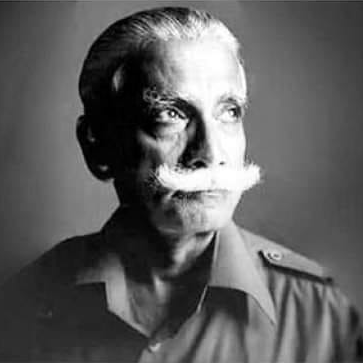
The Osmani Museum is named after Bangabir General Muhammad Ataul Gani Osmani, the Commander-in-Chief of Bangladesh Forces (12 April 1971 – 7 April 1972) during the liberation war. It is situated at the heart of the Sylhet City Corporation area in the Sylhet Division of Bangladesh. It is about 12 km from the Sylhet Osmani International Airport and 3 km from the Sylhet Railway Station. Owned aoperated by the Bangladesh National Museum, this museum was established to pay rich tribute to the great hero of Bangladesh for his outstanding contributions in the liberation war of the country and founding the armed forces of Bangladesh. The foundation stone had been laid on 16 February 1985 and it was inaugurated on 4 March 1987 by the then president of Bangladesh H M Ershad.
Muhammad Ataul Gani Osmani also known as Bangabir (the Hero of Bengal) was born on 1 September 1918 in Sunamganj of Sylhet. He was the commander-in-chief of the Mukti Bahini during the 1971 Bangladesh Liberation War and was the first Bengali four star general. Osmani's career spanned over five decades, beginning with his service in the British Indian Army in 1939. He fought in Burma during World War II, and served in the Pakistan Army until 1967. Osmani was appointed head of the Bengali armed resistance in 1971 by the Provisional Government of Bangladesh, and he is regarded as the founder of the Bangladesh Armed Forces. General Osmani retired in 1972. He died on 16 February 1984 in London.
The contributions of General Osmani have been admired in various ways. The international airport in his hometown, Sylhet, has been named Osmani International Airport after him. MAG Osmani Medical College the main state-run medical college & hospital of Sylhet also commemorates him. Osmani Memorial Auditorium in Dhaka is a foremost venue for holding Government functions. A Primary School is named after Osmani in the London Borough of Tower Hamlets. The Osmani Museum in Sylhet was set up to acquaint the future generations with the accomplishments of this great patriot.
The museum is housed in Nur Manzil, the ancestral house of Osmani, in Kotwali thana of Sylhet. Nur Manzil is by and large a tin-shed building having few rooms and other amenities including an exquisite piazza in the front. This historic museum comprises three galleries, where personal belongings of General Osmani and a good number of historical photographs are preserved befittingly.
Our Mission
We collected the arms, which General M.A.G. Osmani had used at the Liberation War in 1971, paper documents, which were written for the necessity of the Liberation War, memorial mementoes, which were used by him, his images of social works etc. By collecting, preserving, displaying these memorial things and research works of these objects we want that the visitors of the museum will realize the real history of the Liberation War. This is the mission of the Osmani Museum.
Our Vision
In 1971, the freedom fighters, the guerrillas and the freedomist Bangalee fighters attended the Liberation War. They have sacrificed their lives and achieved independence from the West Pakistani Rulers. We want to inspire the future generation by preserving the memorial histories and objects and by displaying them in the gallery. This is the principle vision of the Osmani Museum.